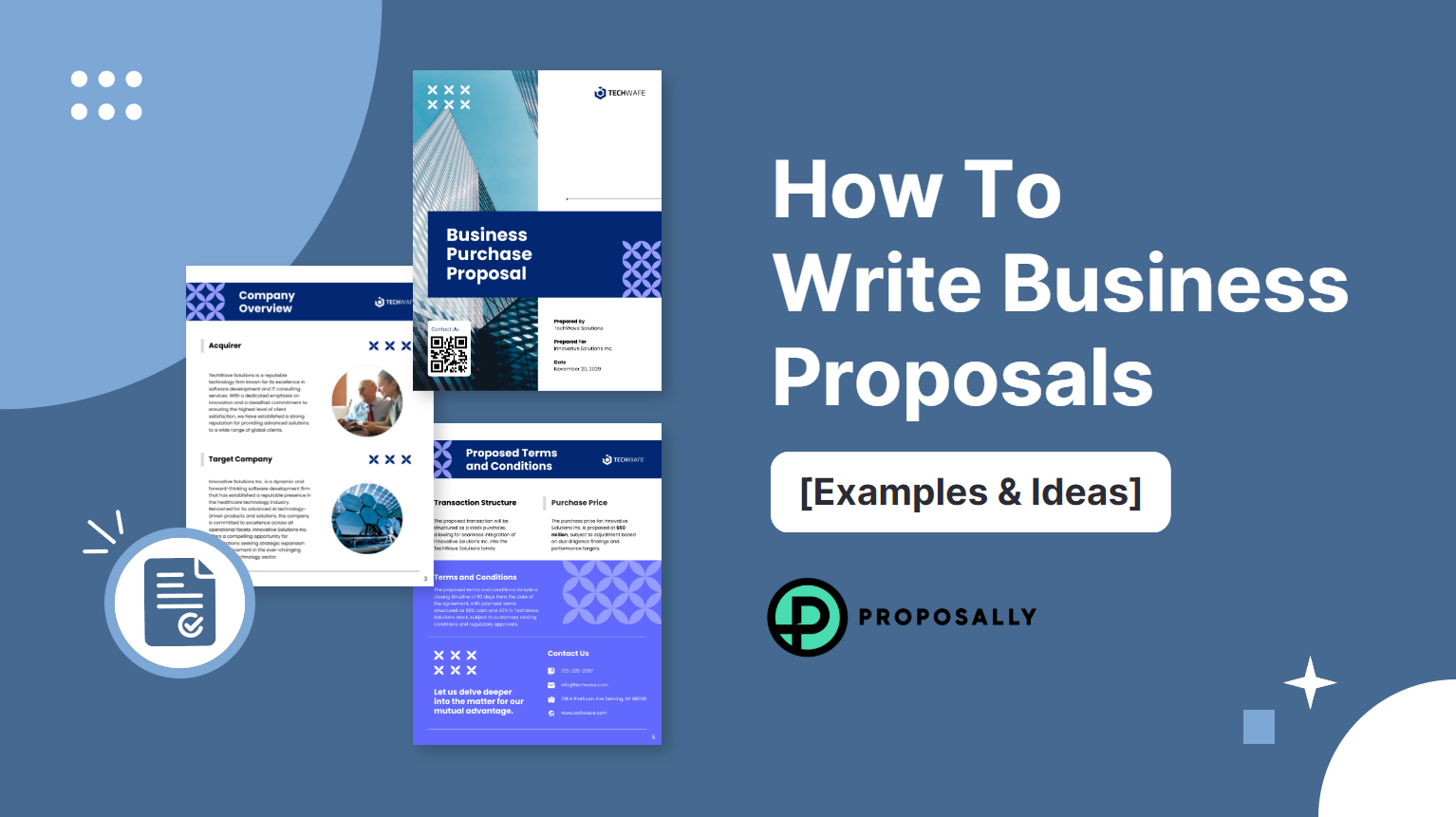winning business proposal isn’t just about outlining what you offer—it’s about creating a roadmap to success that gets clients and team members on board.
But how do you actually do that?
Instead of jumping ahead to the writing part, we recommend newbies to start with the client discovery phase. I talk more about why that’s important later on.
In this article, I’ll walk you through the two phases of business proposal writing that we follow at Proposally to make the most out of every pitch. Let’s get started!
How To Write Business Proposal: A Step by Step Guide
As I mentioned, most people skip ahead to writing the proposal–only to realize they’re struggling to even identify their client’s key problems.
We like to do some groundwork before writing because the client discovery is where you get 80% of the content you’ll be using for your business proposal.
At Proposally, we like thinking of proposal writing in two distinct phases that feed off each other:
- The client discovery phase AKA getting all the content ready
- The proposal writing phase AKA structuring all the content you prepared
Phase 1: Client research, discovery phase, and identifying key problems
Think of this as your data gathering step. The actual proposal writing phase is about piecing the puzzle together—this section is all about picking up the individual puzzle pieces. You can launch the client discovery phase as soon as you…
Discover their key problems
Start with a discovery phase before sending a proposal, since many companies expect this step anyway. Doing some form of discovery—whether it’s a comprehensive 60 minute call or a one-page onboarding form—signals to your potential clients that you’re invested in their situation.
The Nielson Norman Group, which are considered the UI/UX experts, say it’s best to think of discovery phases as a “validation exercise”. Your goal is to identify exactly what the client is experiencing, instead of moving forward with assumptions.
Instead of defining what their problems are in a vacuum, you’re co-creating a shared vision with them.
To set a common ground, we like asking questions like:
- Their current situation: “What major initiatives are you prioritizing over the next 12-18 months?”
- Obstacles preventing progress: “What internal challenges or external roadblocks are you facing?”
- Past solution attempts: “What strategies have you previously tried to solve these issues and what were the results?”
- Their needs: “If you had a magic wand, what would your ideal solution look like in terms of capabilities, resources, and working partnership?”
Pay close attention to metrics that they repeat. Your goal here is to identify patterns in the way they describe their problems and frustrations. You can use that to develop an empathetic, customer-centric problem statement.
Develop a well-rounded problem statement
As you learn more about their key problems, evaluate these insights by asking:
- What is preventing the client from achieving their goals?
- What issues, both internal and external, are causing these issues?
- Why is solving this problem critical to the client’s success?
- What are the risks and potential impacts of not addressing it?
These questions can help you synthesize their problems into a coherent problem statement.
Think of the problem statement as the foundation of your proposal; it explains the “why” behind it. We talk more about how to write one below.
Phase 2: Structuring your proposal
Now that you’ve got the key parts of your content, converting these into an actual business proposal should be a breeze. The first step is to…
Create the Title Page
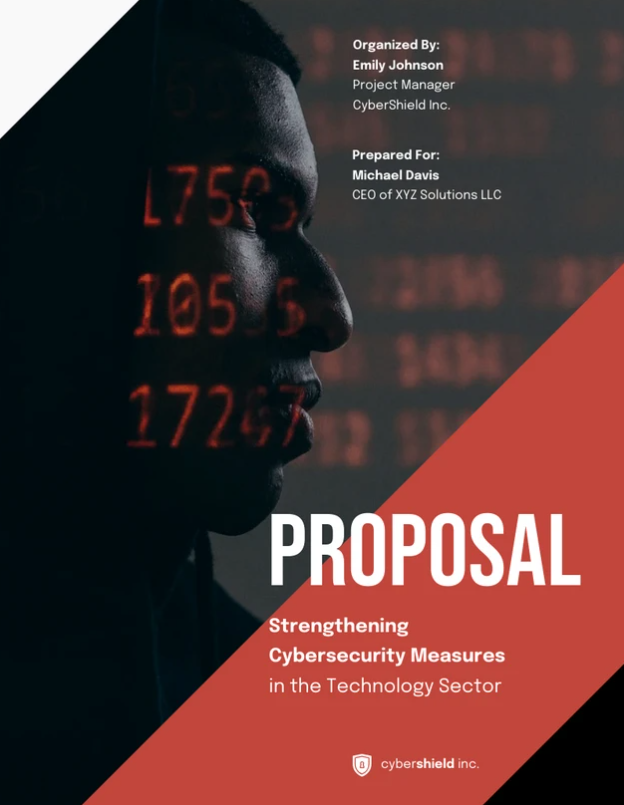
It should include:
- Name of your company
- Your company logo
- Proposal sent date
- Name of the potential client you’re submitting the proposal to
Keep the title page clean, uncluttered, and focused to make it instantly recognizable.
Structure your Table of Contents
If your proposal is quite lengthy, adding a table of contents after the title page can be helpful for the reader to quickly navigate the different sections. List out each main section and the page numbers they start on.
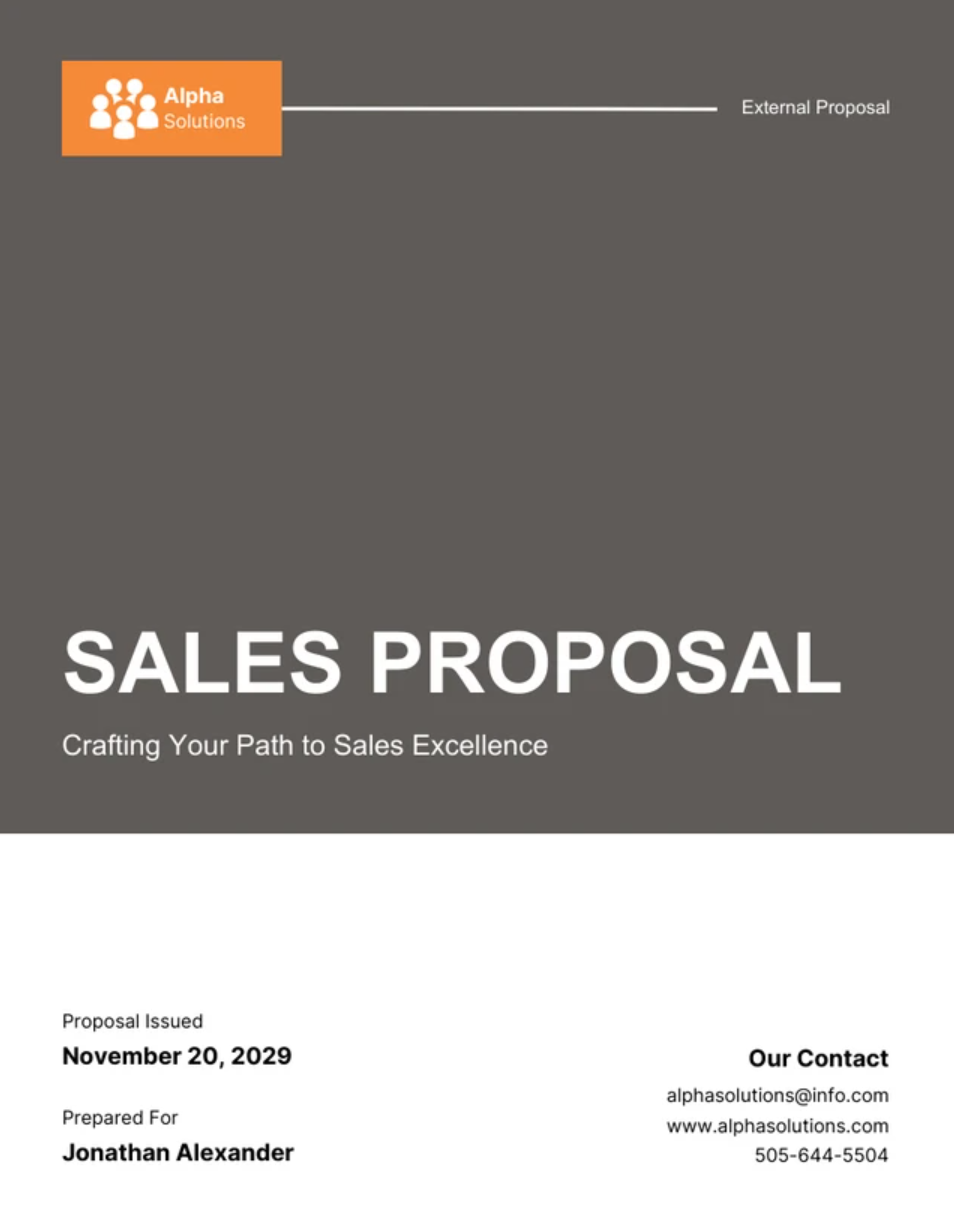
For shorter proposals of only a few pages, a table of contents isn’t necessary.
Or if you’re sending an online business proposal, use anchor links or a clickable menu instead of page numbers. This allows recipients to easily jump to different sections of your PDF or web-based proposal with a single click.
Some online proposal platforms (like Proposally.ai) offer interactive tables of contents and navigation menus.
Write the Executive Summary
Despite being the first “main section”, we like to draft this section last so it accurately encapsulates all of the details you’ll be writing.
As for what to actually write, the executive summary should give a high-level overview of your entire proposal.
Check out the executive summary in this proposal to get a better idea:
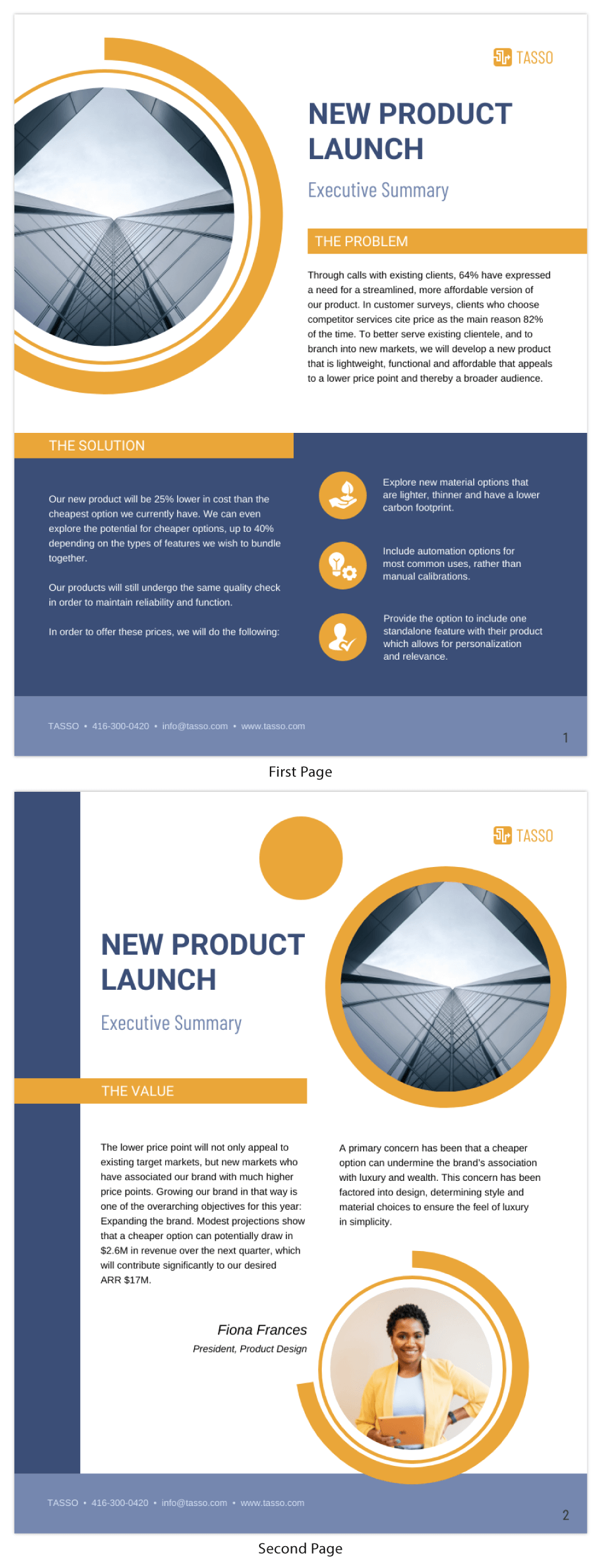
Think of it as a 1-2 paragraph elevator pitch where you:
- Cover the key problems you’ll solve for the client
- Briefly discuss your proposed solutions
- Provide an overview on your projected timelines and costs
Include your Problem Statement
As previously mentioned, the problem statement is a one to two-sentence summary that defines the core issues, pain points, or obstacles your potential client is facing–and why these need to be addressed.
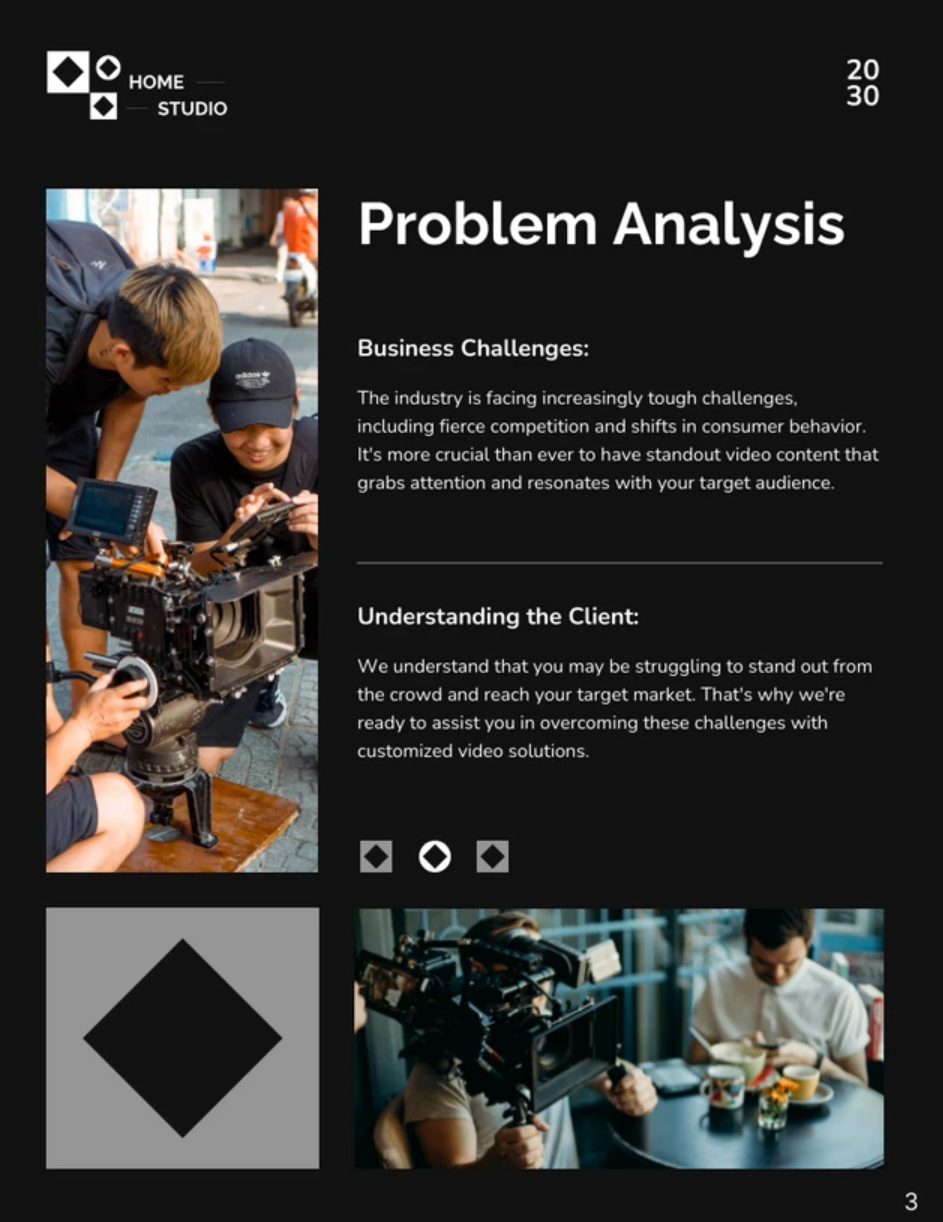
Write this using client-specific language, quantifying impacts where possible. A strong problem statement makes the reader nod and think “Yes, this is exactly what we’re struggling with.”
In writing your problem statement, think about including these three key elements:
- The specific problem statement: “Company X is struggling to increase online conversion rates for Product Y due to an unclear brand positioning and disjointed digital presence across marketing channels.”
- Impacts and risks: “If not addressed, this issue could result in continued sales stagnation, loss of market share to competitors, and erosion of brand equity.”
- Why it’s critical: “As their flagship product line, improving Product Y’s digital presence is essential to hitting revenue goals.”
Define your Solutions–the more specific, the better
After defining their key problems, the next section is all about how you plan on addressing their issues.
For the Solutions section, discuss the techniques, processes, and services you’ll be implementing to address these key issues. Be as clear as possible about your action plan.
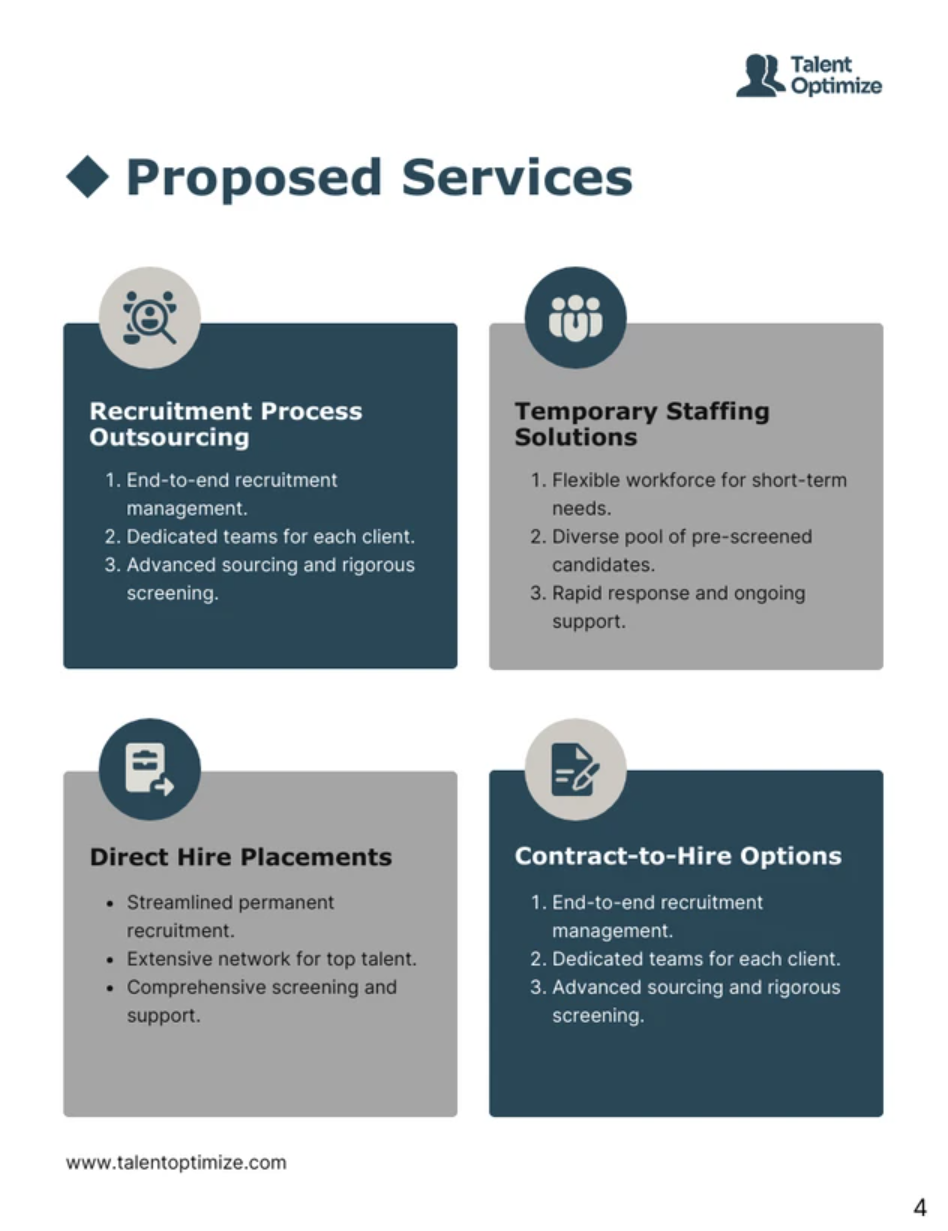
For example, if your proposal is about launching a new advertising initiative to boost sales, talk about the steps you’ll be taking to make that happen.
- What resources will you be using?
- What does the implementation period look like?
- Why are you choosing this solution over others? What are the benefits of implementing this instead?
Talk about why you’re qualified
You’ve pointed out their issues and offered some great solutions–now it’s time to explain why they should trust you to get the job done.
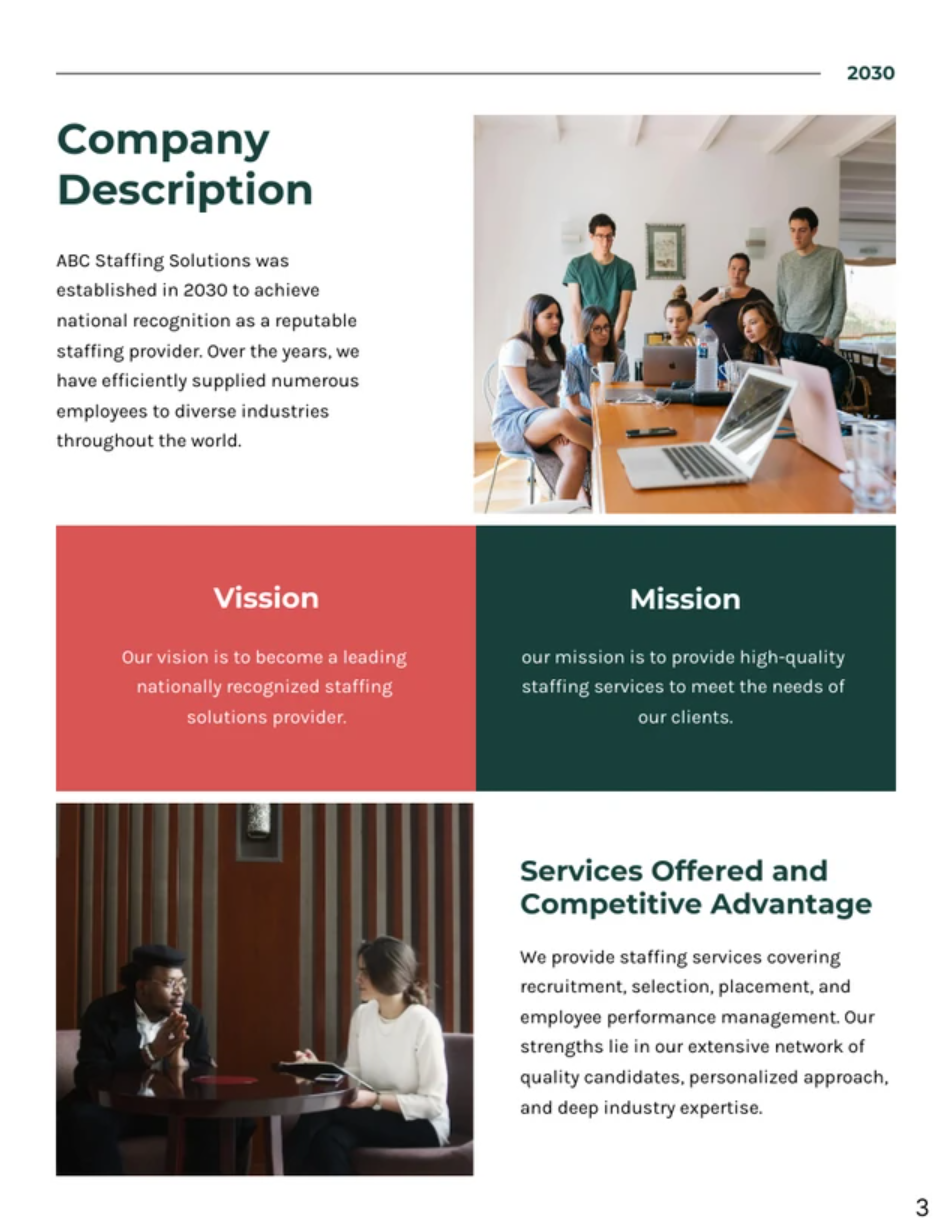
The qualifications section allows you to showcase your company’s relevant expertise.
You can talk about:
- Past successes with similar clients/situations
- Credentials of your team members who will be involved
- Client testimonials
- Industry awards or certifications, especially for technical fields
This is especially important if you’re working with a new client for the first time. They need to know why you’re the right choice.
Use charts and tables for Timelines and Deliverables
The Timeline and Deliverables section ensures that everyone is on the same page in terms of deadlines and deliverables.
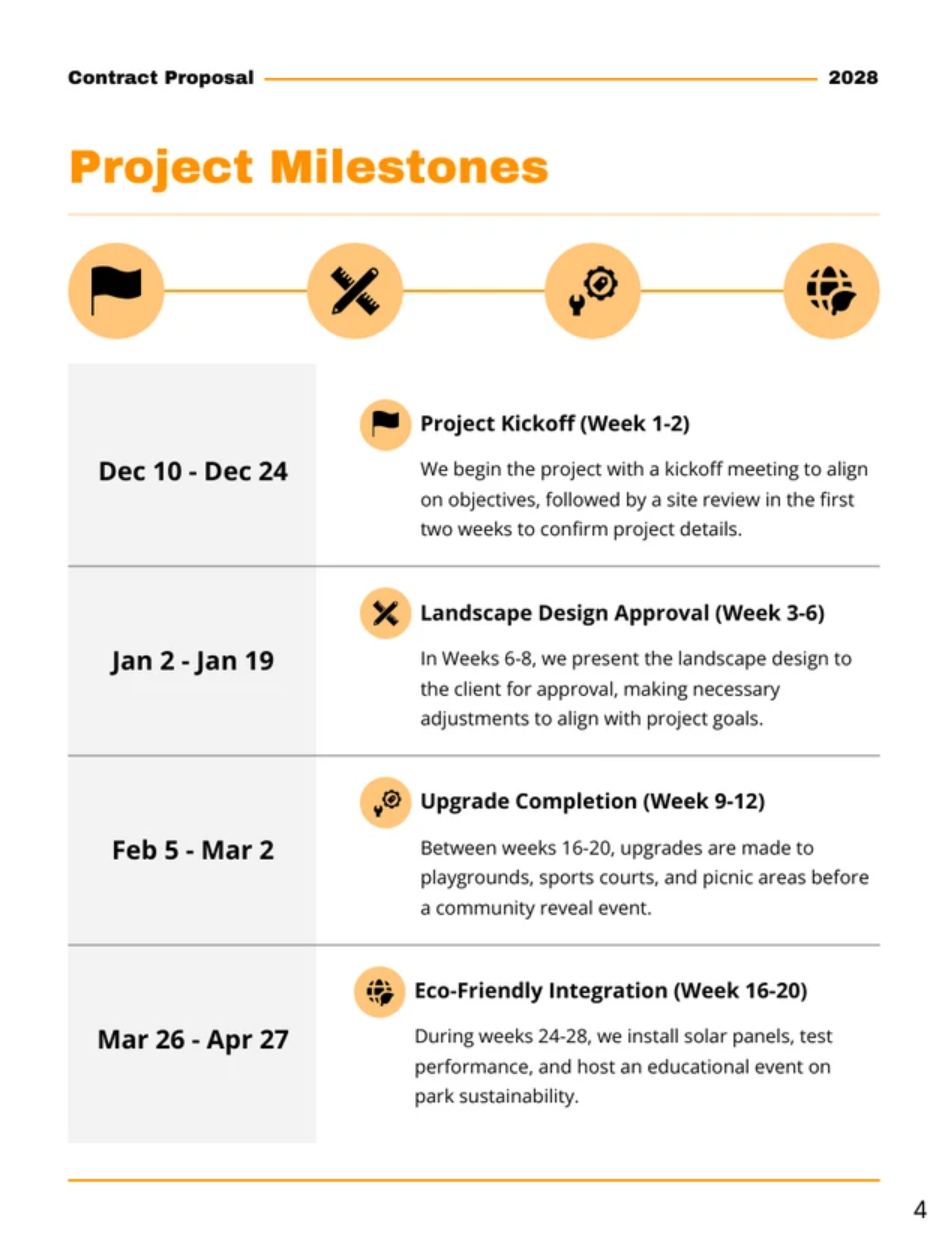
To make it simple for your prospects, consider presenting the timeline in a visual format, or using comparison datatables to map out your deliverables.
Justify the costs with the Budget and Pricing
The Pricing section explains the cost of the project.
We like fleshing out this section a bit more by addressing some objections around the cost and clearly explaining why the project is worth the proposed cost.
Here’s a sample budget breakdown:
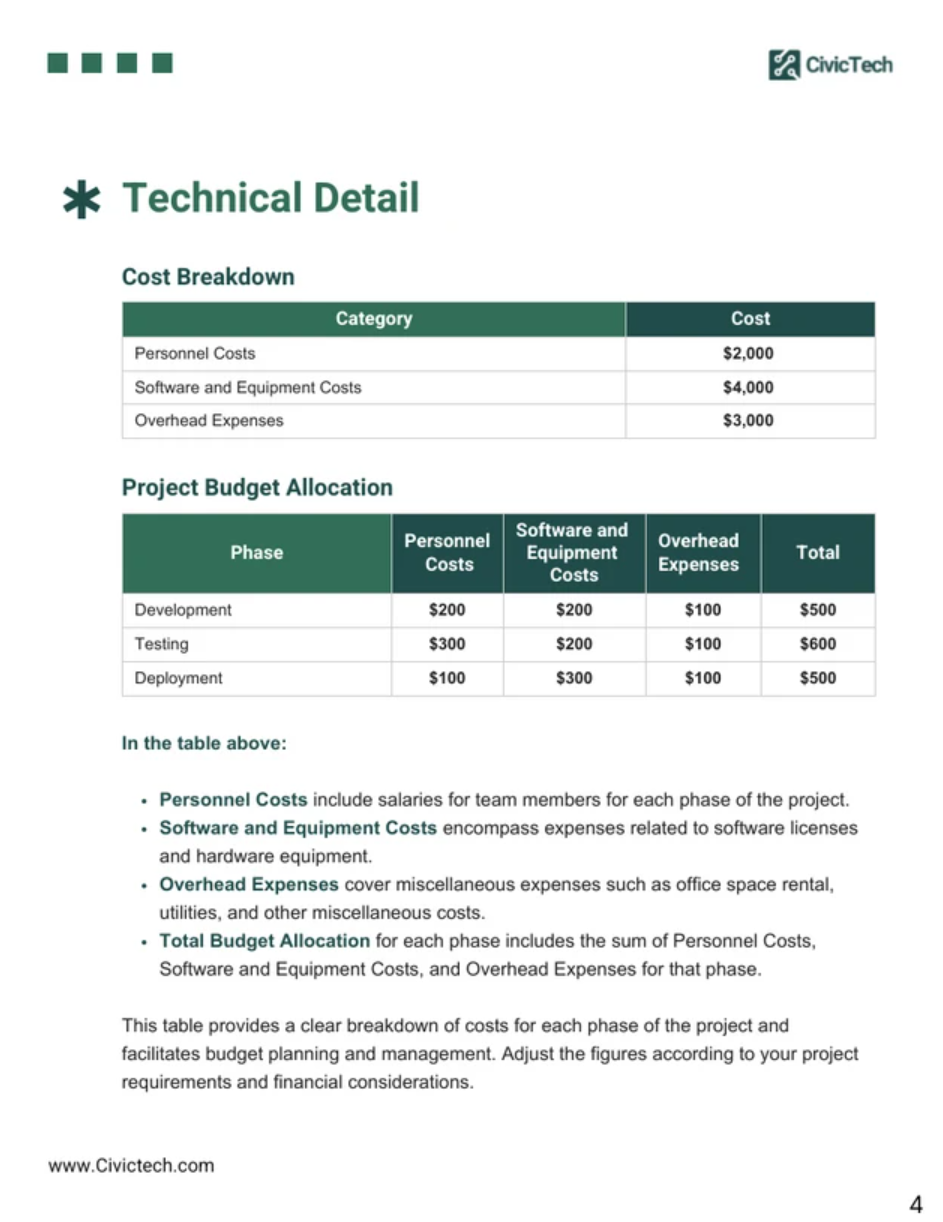
When justifying the cost, you want to think about:
- Linking each expense to a specific benefit or value it brings to the project
- Emphasizing long-term savings
- Providing a comparative analysis showing how your pricing aligns with or is better than market rates.
- Explaining what each cost item covers, and why it’s necessary
Wrap up with a clear CTA
Finish off strong by reminding your readers of the key benefits of your solution and urging them to take the next step—whether that’s scheduling a follow-up meeting, signing the agreement, or giving the go-ahead.
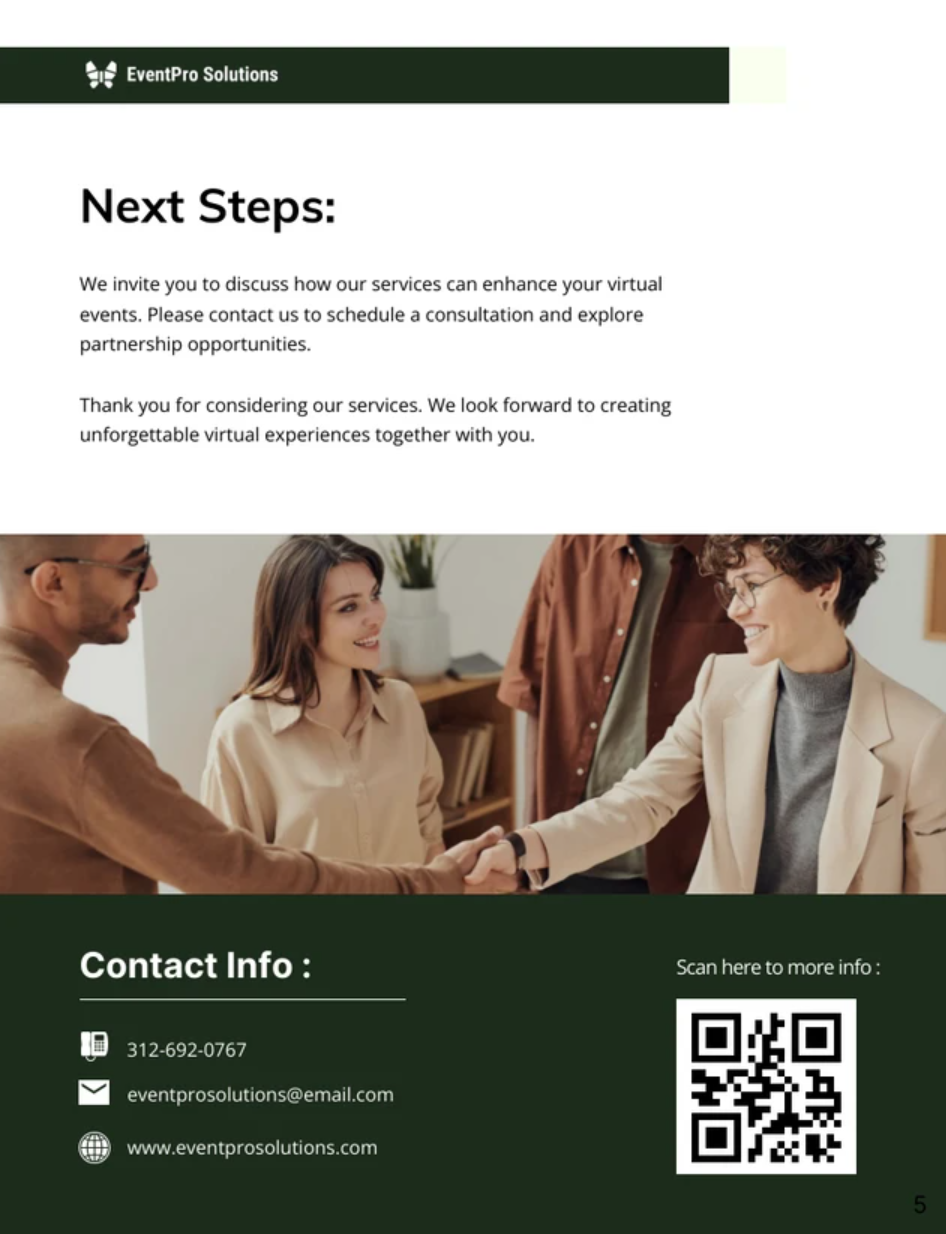
For online proposals, consider adding an eSignature section so clients can sign the proposal on the spot.
Business proposals samples and templates
Sample 1: Simple budget proposal
This proposal is just three pages but covers all of the essentials. There are dedicated tables for the research, optimization, and marketing phase of the project. It’s a great template if you’re looking to simplify things like deliverables, timeline, or project cost for your proposal.
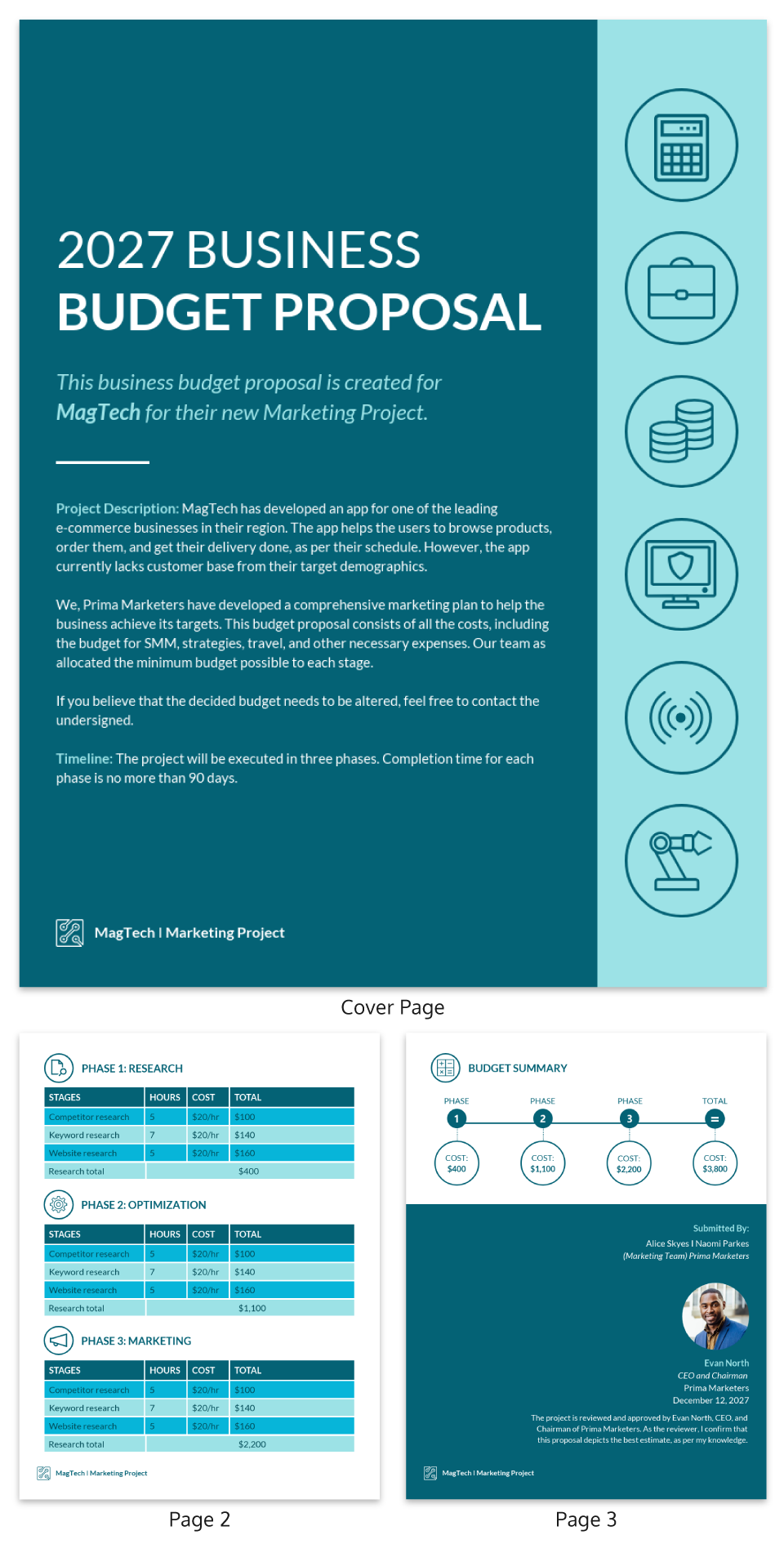
Sample 2: Proposal for creative project
This editable template is perfect for agencies who are pitching a creative project. There is a dedicated budget breakdown section, which shows a table and a paragraph for justifying costs. The dedicated “About the team” page is also perfect for building credibility for your team.
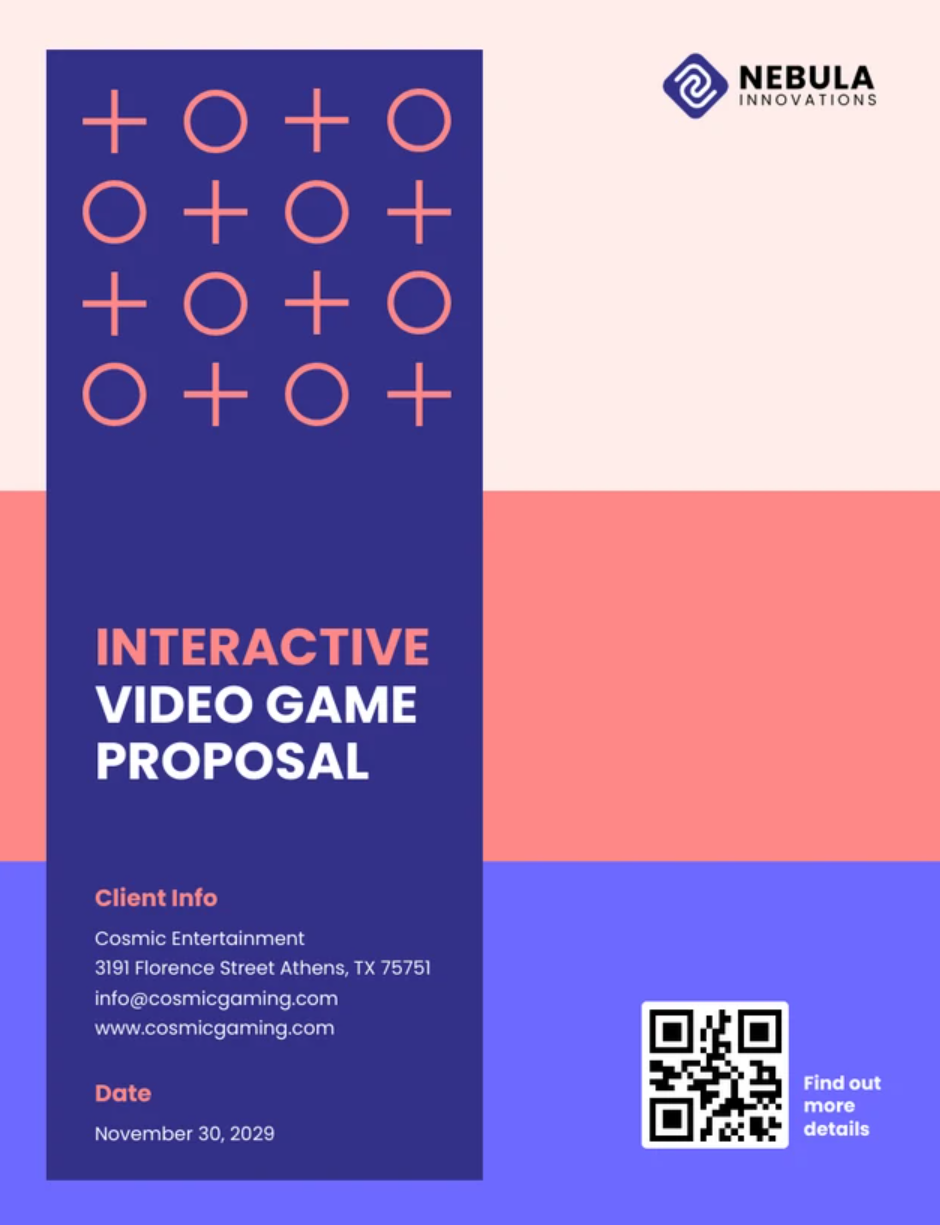
Sample 3: Agency proposal template
This proposal template is perfect for agencies who want to start off their proposal with some market research and observations. The template starts with a problem statement and opportunities section, then moves into a timeline of approaches and strategies.
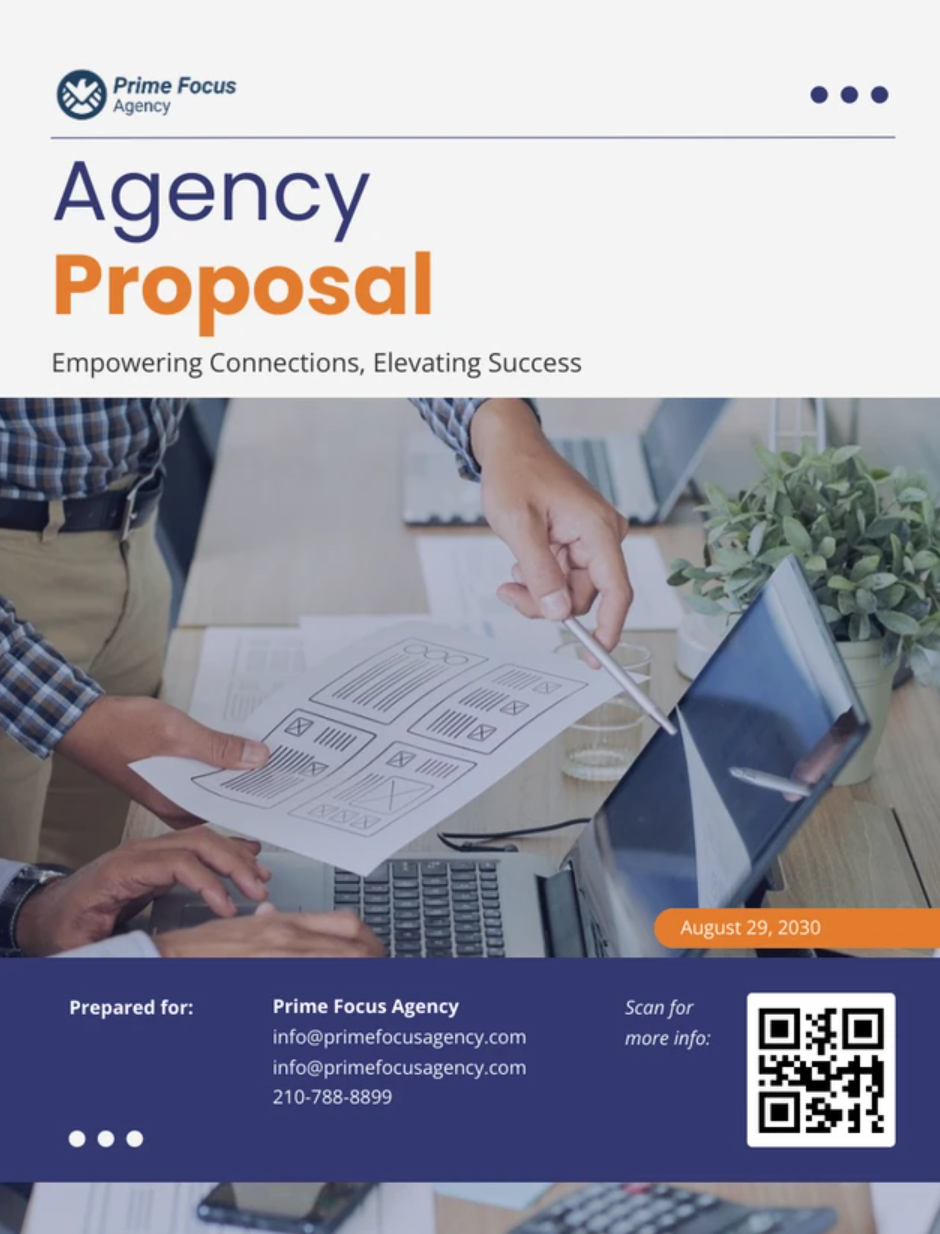
Sample 4: Proposal template for SMBs
This template is pretty straightforward, which makes it a perfect template if you’re working with busy SMB business owners. There’s an editable table with a description field that you can use to describe deliverables in detail. You can use the conclusion section to recommend next steps they can take to keep the negotiation moving.
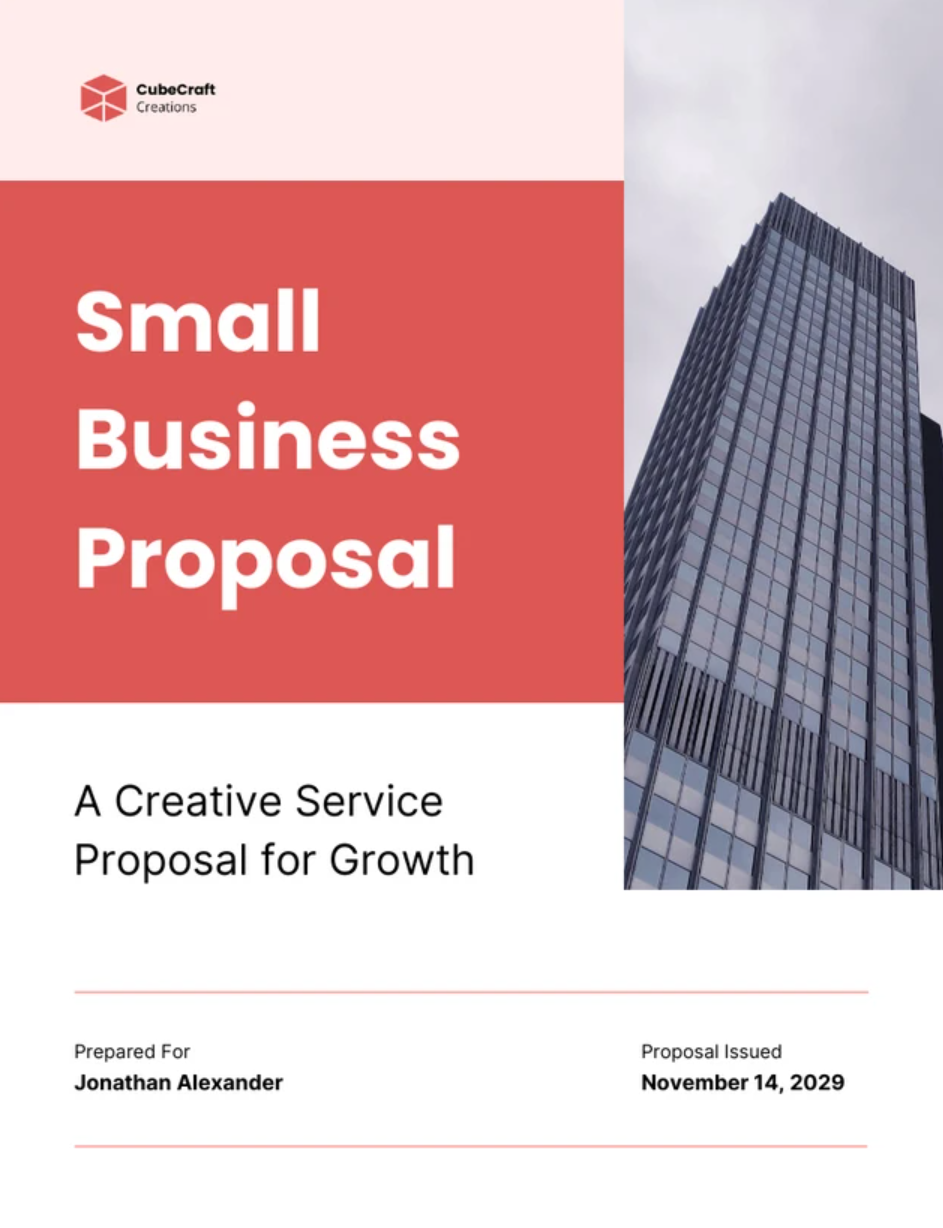
Sample 5: VA agency, HR, and staffing proposal temp
This template is perfect for HR and staffing agencies who want to showcase their different packages and services. This template is definitely flexible enough to be repurposed into different proposals, regardless of your industry or niche. There is a milestone tracker that you can edit to fill in the project timeline. The dedicated company description section is also useful for highlighting your core values or past projects.
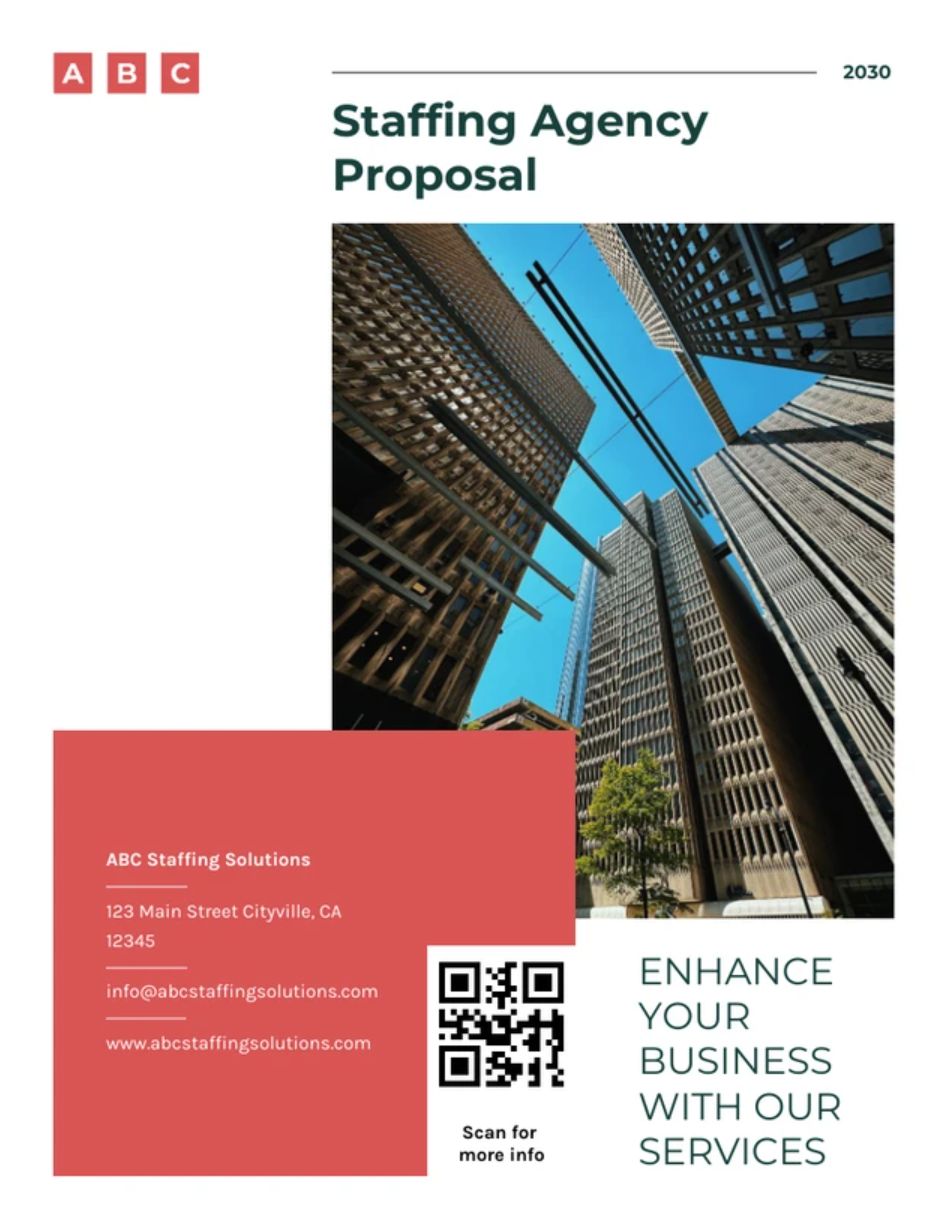
Sample 6: Proposal for seed funding
This seed funding proposal template has everything an investor might want: a detailed background and problem statement, a plan/action execution roadmap, and a dedicated fund utilization plan.
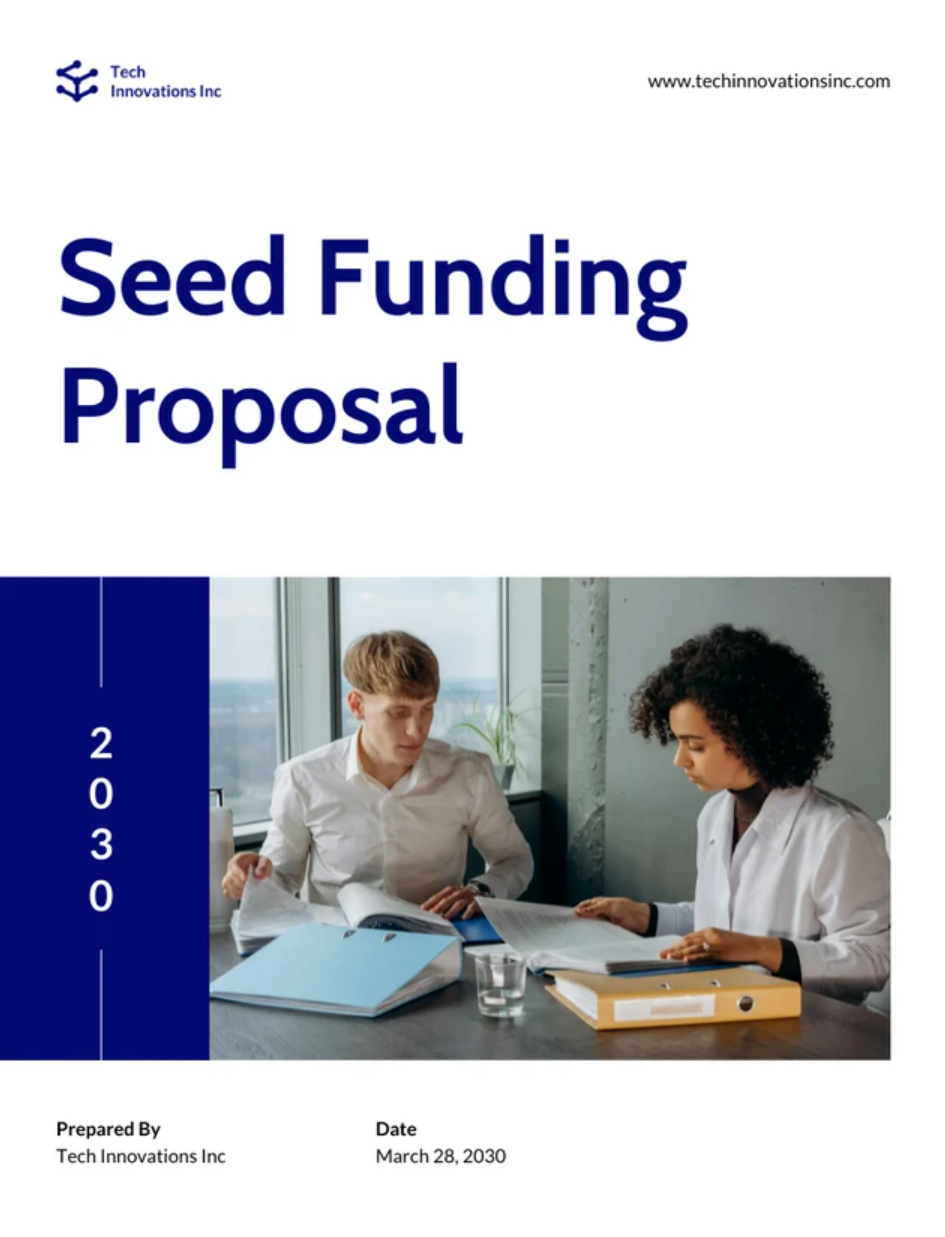
Sample 7: Proposal for construction project
This construction bid proposal template is perfect for contractors or engineers looking to provide a breakdown of materials, labor, and costs. There is also a dedicated terms and conditions page that’s already filled in with content and copy for the scope of work and payment and a basic payment and warranty section.
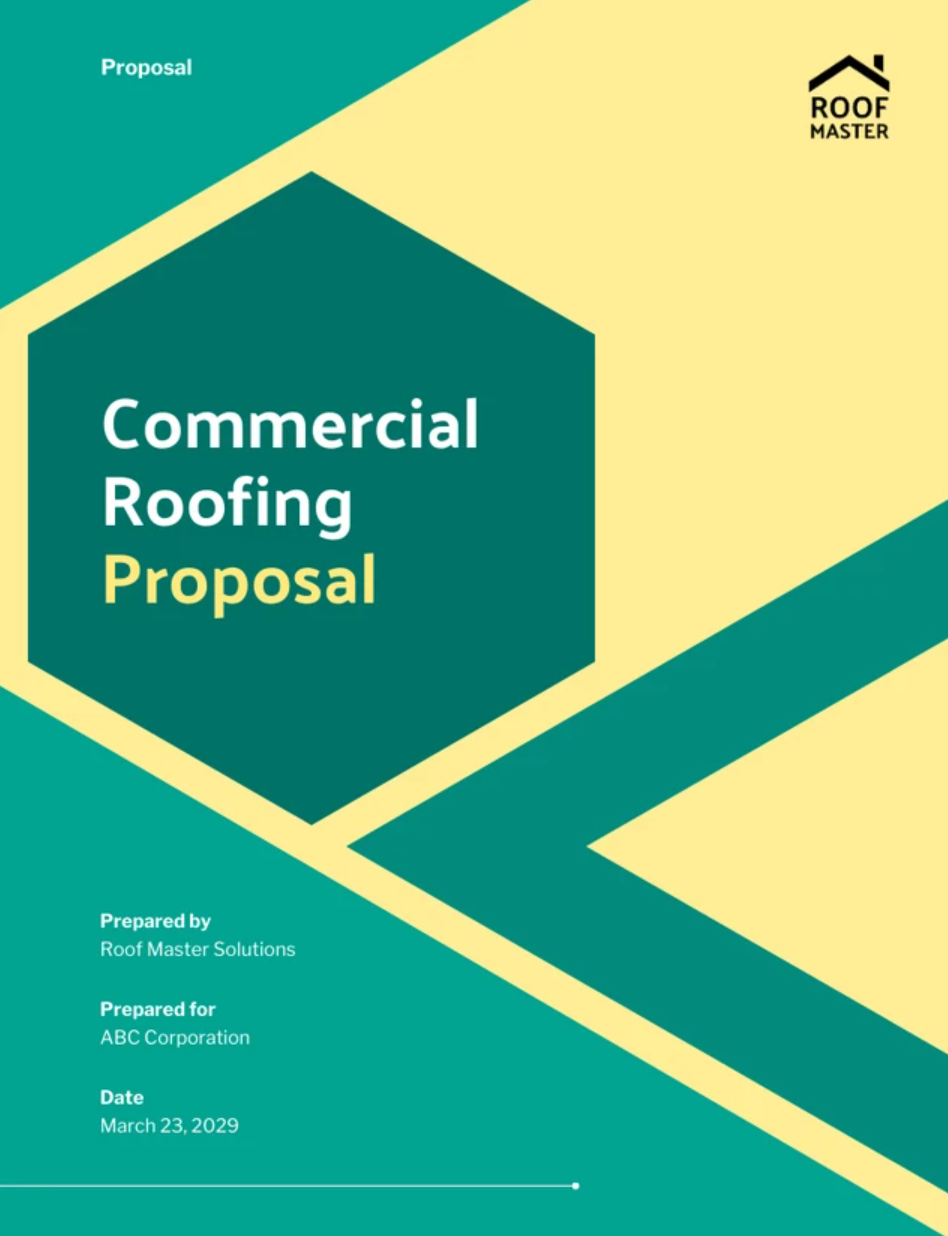
What is a business proposal?
A business proposal is a document created by either an external contractor or an internal team member to launch a new initiative, project, or action plan.
Although proposals come in all shapes and sizes, it typically includes an executive summary, a problem statement, a solution section, a milestone or timetable, and finally the pricing section.
Looking for more resources to sharpen your proposal writing skills? Here’s a shortlist of resources you might enjoy:
- Business Proposal Format: An Ideal Proposal Structure
- How To Create A Business Proposal Presentation
- Best Proposal Writing Examples: Learn & Implement Today
- 10+ Proposal Software for Proposal Creation
- How To Write An Executive Summary For A Proposal
Create a business proposal in minutes
Proposally makes it easier for business owners to create, customize, send, and track proposals.
Proposally lets you quick launch an existing template from our library of 1,000+ handmade proposals. Each proposal is designed with industry-specific standards and best practices in mind, and all you need to do is customize it with your own pricing structure or process flow.
Unlike most proposal creation software, we know exactly how important it is to present data with your proposals. Our editor lets users add data visualization tools such as timetables, flow charts, and graphs that you can autopopulate with CVS imports. You can then send and track your proposal’s opens, views, and shares of your existing proposals.
e-Signatures, pricing tables, analytics, and more 👀
Join the waitlist and get 30-day free access to Proposally when we launch. You’ll be get access to our no-code proposal editor and our library of 1,000+ quick launch templates + access to proposal analytics and eSignatures. No credit card needed.

